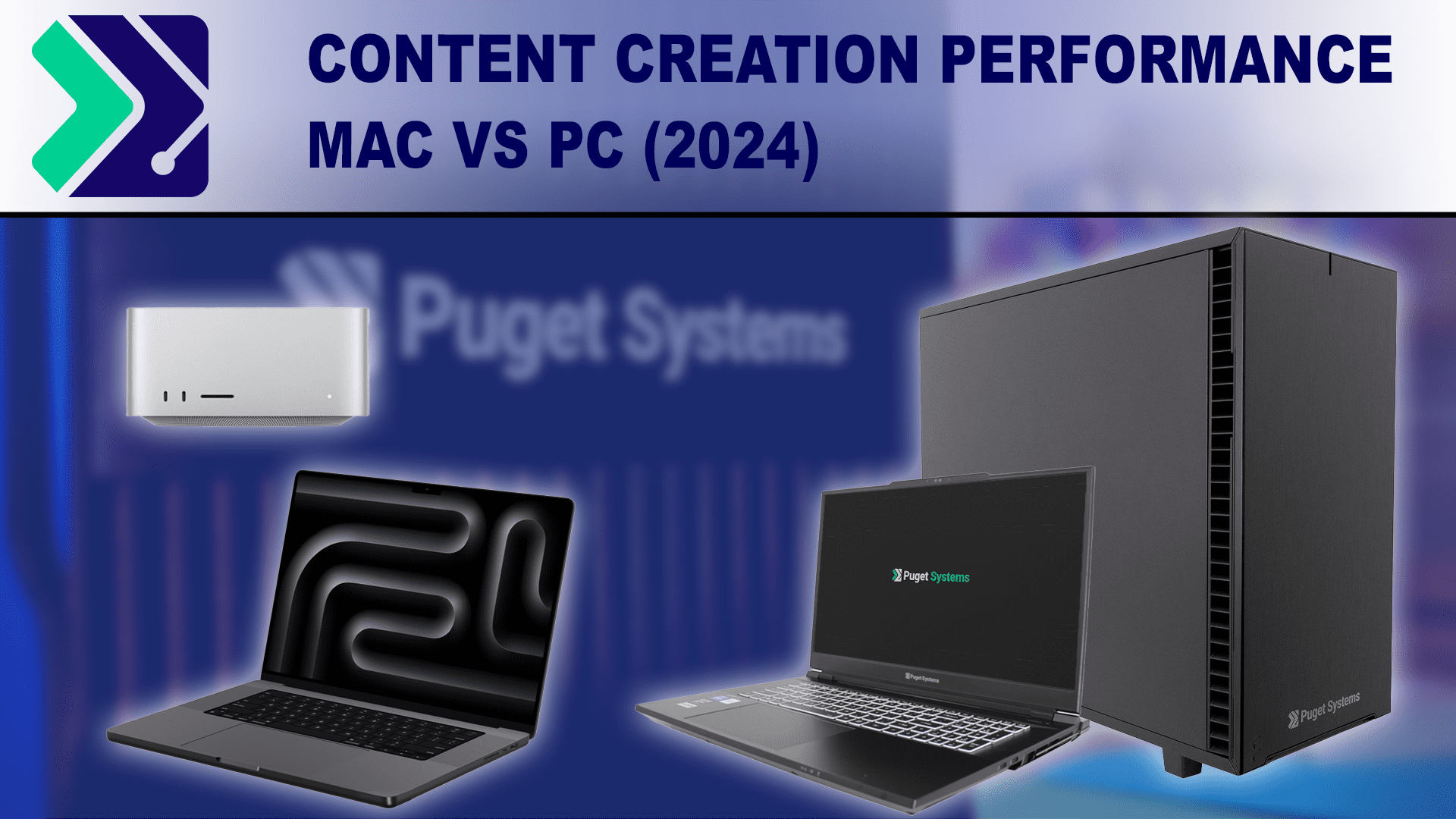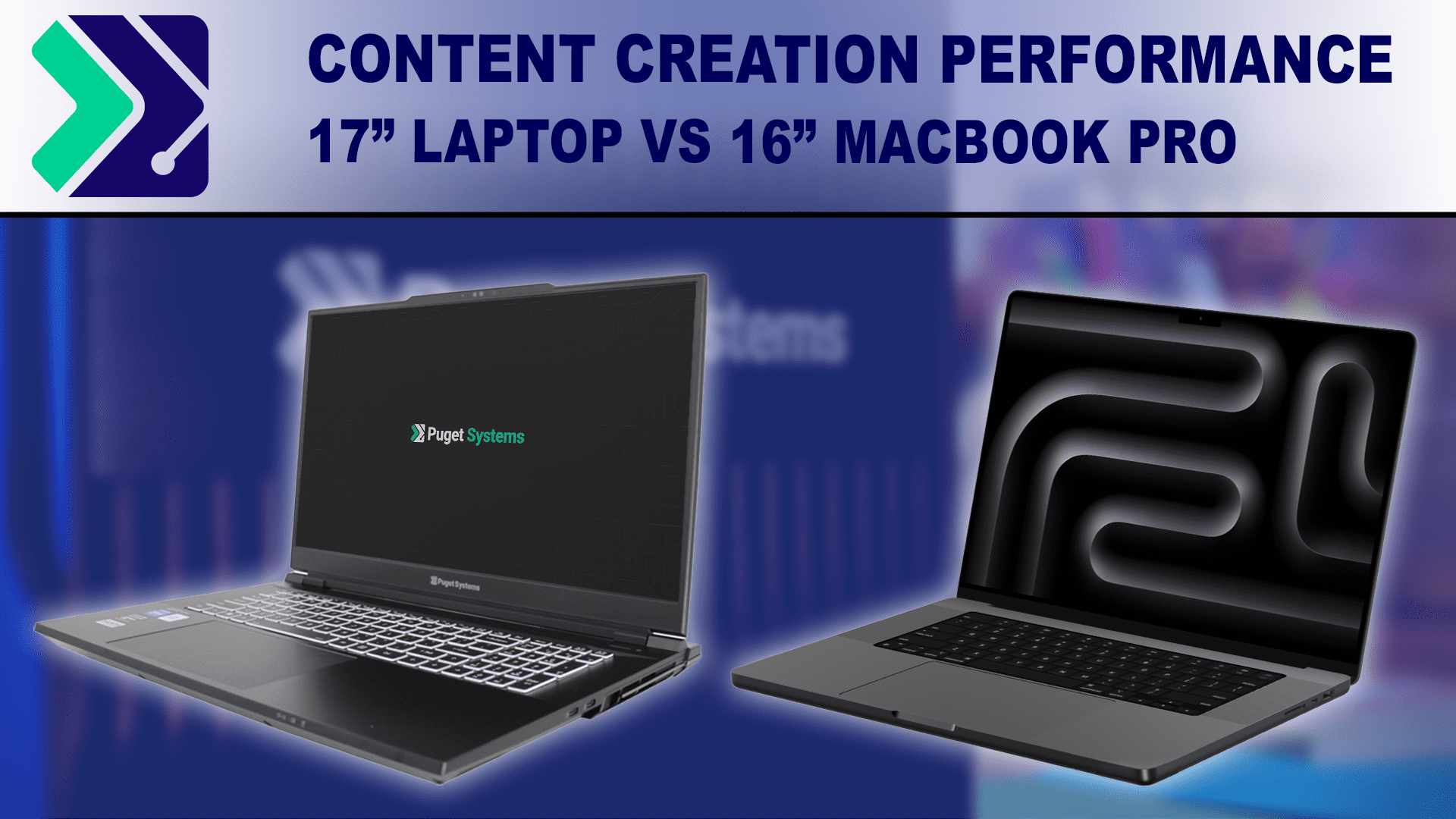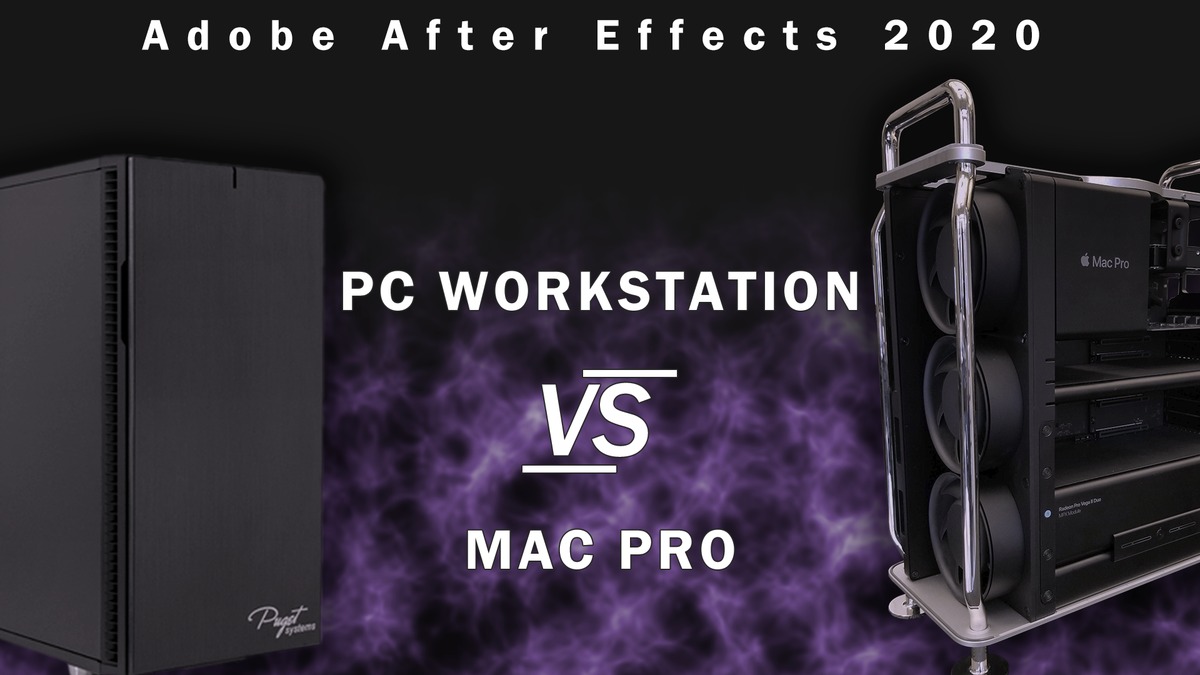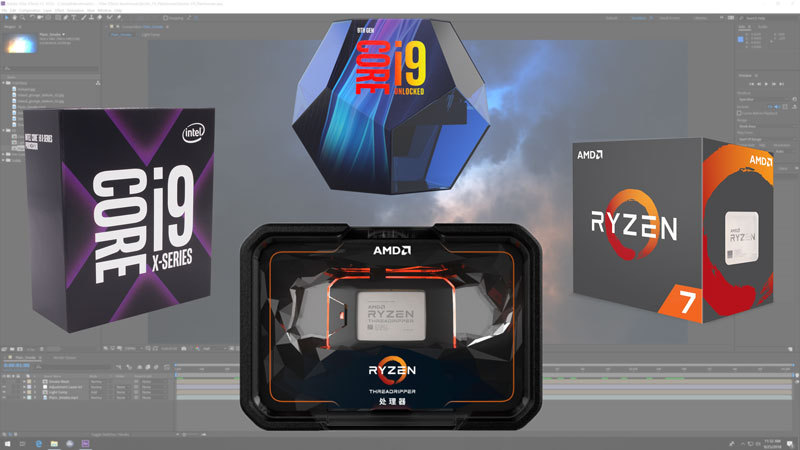Following our recent M3 Max MacBook testing, we used our benchmark database to get performance data for Mac vs. PC for content creation.


Following our recent M3 Max MacBook testing, we used our benchmark database to get performance data for Mac vs. PC for content creation.

How does the new Puget Mobile 17″ compare to the top-end M3 Max MacBook Pro 16″ in performance for content creation?

Adobe After Effects can easily bring even the most powerful workstation to its knees, but how does Apple’s new Mac Pro compare to a much more affordable PC workstation?

Choosing the right hardware for your new After Effects workstation can be overwhelming with hundreds or thousands of different hardware components to choose from. In this article, we are going to be benchmarking – using our newly released Puget Systems After Effects CC Benchmark – a wide range of processors from Intel and AMD including the Intel 9th Gen, Intel X-series, AMD Ryzen 2nd Gen, and AMD Threadripper 2nd Gen CPU lines. In addition, we will be comparing them to a current Mac Pro 12 Core and iMac Pro 14 Core for those that are considering going with a Mac-based workstation rather than a PC.

After Effects users are often held back by the performance of their workstation, yet a surprising number of users lock themselves into the Mac ecosystem. In this article we will be looking at just how much faster a PC workstation can be in After Effects compared to the iMac Pro and Mac Pro.

In this article we will be examining how the top-end Mac Pro (late 2013) compares to one of our After Effects workstations. This system was designed based on our extensive testing of After Effects and represents both a great value (priced at just over half the cost of the Mac Pro) as well as giving excellent performance in After Effects.